Why You Should Have an eCommerce Store for Grocery Business (COVID-19)
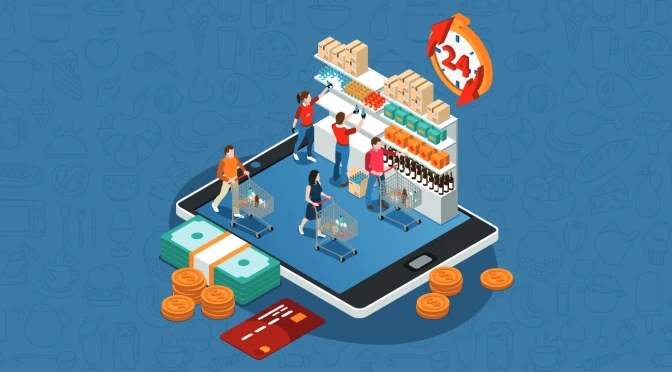
Gone are the days when you had to physically visit a grocery shop to shop for the daily essentials. Nowadays, consumers have become accustomed to availing services whenever they want, just with the click of a button.
Imagining a grocery store where you get intimated about lucrative offers and customer discounts available as soon as you step in and where paying for the order can be completed within seconds was a far-fetched dream at a point. Now, with the recent advances in technology and mobile app development, that dream has become a reality.
With the lines between the physical and the digital worlds getting blurrier by the day, shoppers are becoming more and more comfortable with the concept of digital shopping. Thus they expect the same level of comfort when it comes to the realm of grocery shopping as well.
The development of several e-commerce websites and on-demand applications have further promoted this kind of consumer response. Thus, consumers have gotten used to having products and services being delivered to their doorsteps.
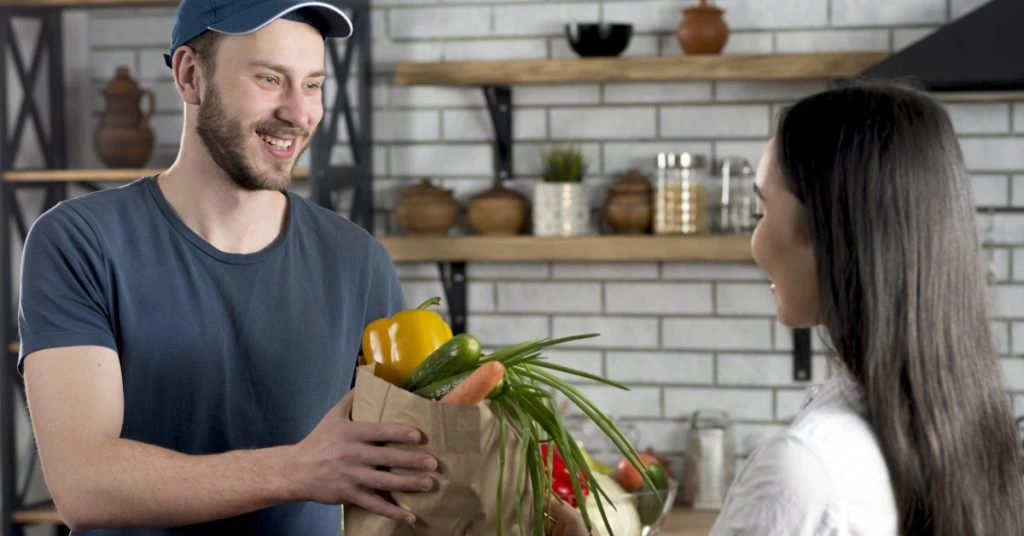
Before the outbreak of coronavirus, these kinds of businesses were looked upon as measures that made life convenient for the users. But after the Covid-19 outbreak, these businesses have become vital to ensure safe living among the members of the community.
As the number of cases of coronavirus increases steadily every day, app-based grocery delivery platforms gain momentum. This phenomenon is not only because of the convenience factor but also to flatten the coronavirus curve by curbing the user’s need to go to the market to purchase essential commodities.
The shift of retail businesses from a brick-and-mortar store to web-store based online business in India started with the advent of Flipkart. A company that had its humble beginnings from the idea of selling books online was subject to several transformations. These transformations ultimately resulted in the company being sold to the US retail giant Walmart, for a whopping amount of 16 billion USD.
The other competitors in the industry, such as Amazon, started emerging in India and took over the retail eCommerce business. Most of these companies switched to app-based interfaces during the very early years of their operations, but these applications had initially started from a web-store based platform.
One of the players in this sector, who skipped the web-store based interface and directly started providing retail grocery solutions through an app was grocery delivery service. People tend to prefer it over going to the market to pick fresh fruits because these app-based services provide quality checks and guarantee the delivery of fresh food.

This kind of a trend where more and more users prefer using app-based grocery services is applicable to the global community. This trend also prevails because perishable food items need to be replenished and re-stocked daily. Instead of stocking up on all the things for the week on one day, it is easier to order fresh fruits and vegetables through the app every day.
This method also ensures that the customer physically does not have to go to the shops to find out what is available. They can directly access the product catalogue online and place their order through these online portals. The portals also offer multiple payment options to the consumers, and this makes it even more convenient for the user to make payments.
Aside from these benefits, users can also avail of the daily offers which are frequently available on different categories of products and the choice of the modes of payment. Several payment portals and wallets have tie-ups with the platforms, and these also provide exciting offers.
These methods ensure that online stores receive daily orders through their platforms and that there is enough time for the app service providers to fulfill the order.
How does a typical grocery app function?
A typical grocery app has a framework that is similar to that of a regular brick-and-mortar store, but the store is only present in a virtual space. As the first step of the process, the grocer has to enlist himself on the app, providing a catalogue of the groceries he has in his store.
The grocer then attracts buyers on the app, waits for them to place an order, and then delivers the order to the buyer’s doorstep. The orders have to be fulfilled within a short duration of time as people do not generally like waiting for a bunch of groceries for a period that spans a week. Thus, expedited delivery is a prerequisite for any grocery app that seeks to make an entry into the market.
How does a grocery e-commerce platform business work?
Nowadays, a majority of the grocery apps work by implementing the marketplace model. According to this model, there exist ‘x’ numbers of sellers and ‘y’ numbers of buyers on the platform. The app facilitates transactions by creating a network between the two by using different marketing techniques such as building trust, providing discounts, and ensuring quality maintenance.
These apps might be customized according to the customer’s specifications in terms of delivery times, one-day delivery, and so on to add to the user’s convenience. The user might want to save his grocery list for the same batch of groceries to be supplied every week on a particular day to replenish the stocks.
On-demand grocery e-commerce platforms, including apps, are harder to design as compared to other eCommerce platforms. Sometimes e-commerce development companies try to over-customize the existing eCommerce apps to develop an on-demand app for groceries, but the process is seldom that simple.

Most e-commerce app development service providers for groceries have the support of different readymade, open-source and cross-platform solutions available in the market. But unlike those, a grocery app needs to be built from scratch in most cases.
This phenomenon is generally because the market for daily consumables is quite different as compared to the market for electronics or consumer durables. Most customers expect expedited delivery from the app.
The grocery apps often supply the order deliverables in different slots to cut down on the costs, unlike the various sellers on the eCommerce platforms who provide delivery services in smaller, more personalized batches.
Needless to say, an online grocery store will have a lower margin as compared to the market for other non-consumable goods. This small margin is because these products have to compete with the prices provided by the local grocery stores which do not have to worry about factors such as shipping charges.
Even then, having a grocery e-commerce platform comes with its benefits since it targets a niche segment of the consumers. The options offered by these platforms are of a wider variety as compared to the other players that operate in the local grocery market. Whatever might be out of stock in the local market might be found and ordered over the online platforms.
The platform’s target demographic includes people who are working professionals without the time to go out and shop for groceries every day. Or this might simply include people who prefer the convenience of doorstep deliveries to skip the crowd and the lines at the billing counter.
More and more people in developed nations are leaning towards carrying out their daily shopping from online grocery eCommerce platforms. So much so that even local players in the grocery market, which primarily operated out of brick-and-mortar establishments have started joining this market space.
These moves ensured that the competition existed both at the local level as well as in the online space. To combat that move, some competitors in the ecommerce market have also started establishing brick-and-mortar businesses.
The idea behind such a move was not only to counter the competition but also to expedite the process of shipping the orders out from a centralized outlet. This process would reduce the cost of delivery incurred while shipping the orders out separately from different seller’s warehouses.
Coronavirus – A Driving Force?
The conditions mentioned above is the scenario that prevailed before the Covid-19 outbreak that took the world by storm in the early months of 2020. After the coronavirus outbreak, the situation has changed completely.
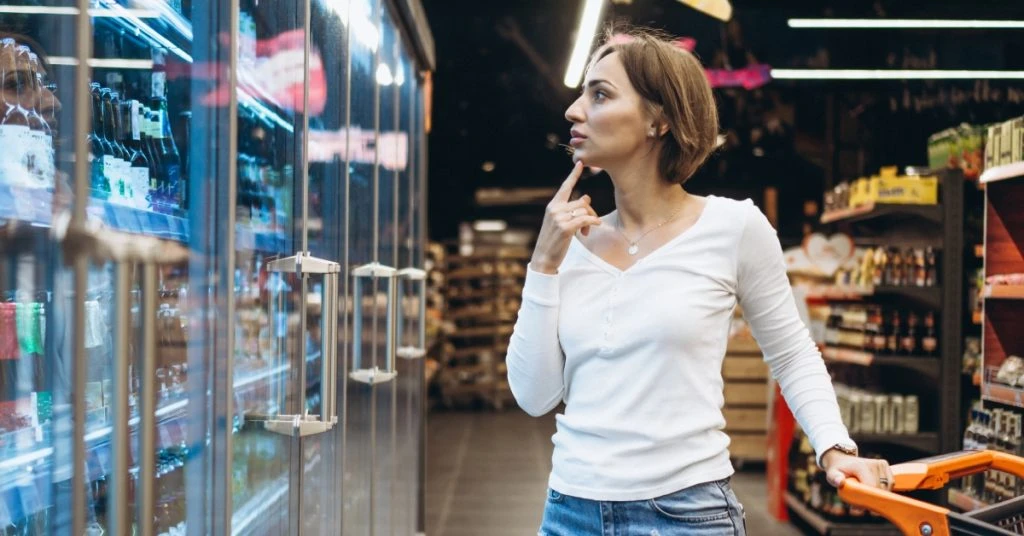
With governments all over the world asking its citizens to stay indoors and taking up measures to ensure the same, offline retail shopping took a massive hit in March 2020. The same month witnessed a nationwide closure of malls and stores all over the country. The entire retail economy had to shut down.
When different countries announced the beginning of the lockdown period, the customers went into a state of panic, since they feared that an extended quarantine period might lead to a lack of essential commodities. In that state of fear, people started buying consumables in bulk, to hoard supplies.
This sudden increase in demand for essential items triggered a situation that might have led to an artificial rise in inflation. But surprisingly, the inflation level was kept in check by the online eCommerce platforms that provide essential items.
During the initial days of panic buying, there was a sharp rise in the number of orders placed through the online applications. Whatever the consumers failed to get from the market, they ended up purchasing them through the online grocery apps. The presence of these alternatives helped to ensure a continuous supply of goods that were demanded by the consumers.
Once the period of the lockdown started, only the retail businesses that provide food services and essential goods and commodities such as groceries remain operational. All other retail businesses – both online and offline – have been suspended for the time being to flatten the curve of contamination.
Companies such as Grofers, Bigbasket, Amazon, and Flipkart have so far ensured that people can get their supplies delivered to their doorsteps quickly. Most e-commerce platforms have suspended all selling activities associated with anything apart from essential home essentials.
Flipkart and Amazon have declared that due to the massive volume of sales orders, they will be prioritizing the delivery of household staples and medical supplies to their warehouses. The other pre-existing orders of non-essential items would either be canceled or be shipped after the lockdown period is over.
These brands have also made options for contactless delivery available to the customers while taking additional care to ensure safety and hygiene for the delivery agents who are still working during these times.
Initially, after the lockdown period started, the supply chains had been badly hit due to the restrictions on the manufacturing industries, as well as the distribution networks. The shortage of delivery executives to complete the delivery of the orders was also a contributing factor for the initial delay in fulfilling the orders.
Also, additional delays took place during the initial days due to the online grocery delivery platforms having to obtain the relevant permissions from the government for all of its delivery executives. But this gap is getting bridged slowly as the process of order fulfillment becomes more streamlined.
Although retail grocery outlets are still operational, they are only open within a particular time frame, and most people are still afraid of getting exposed to the virus. So, at these times, going for online e-commerce platforms that sell groceries is a better idea.
What are the products that people are buying online?
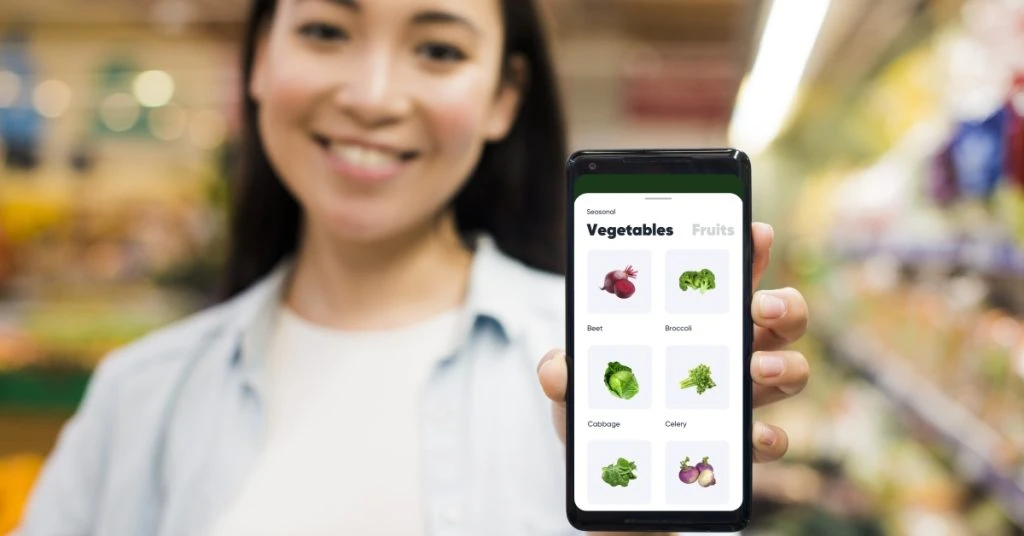
Among the first products to go out of stock were N95 face masks (which protect against coronavirus) and online platforms such as Grofers had been selling them at INR 90. Other pharmacies across the country were selling them at prices upto INR 500.
Other items that faced an exponentially high demand included sanitizers. Apart from that, things that experienced a massive demand online included sanitization products such as floor cleaners, hand wash, and soaps, as well as immunity-boosting products such as honey and Chyawanprash.
Staple products such as carton milk, rice, atta, and pulses were next, due to the effects of hoarding. Most of these online portals used to provide discounts on bulk orders previously. But these discounts have been lifted to disincentivize people from hoarding supplies.
Aside from the initial hiccups that were experienced, there is enough time for these companies to bounce back in the economy and gain a significant market share in the retail grocery markets.
According to the other players in this market, there is enough supplies present that can cope up with the increased market demand. As the lockdown period continues to get extended, these mechanisms are bound to balance out and create an equilibrium in the market, which matches demand with supply.
Why You Should Have an eCommerce Store for Grocery Business:
Changing perspectives towards online grocery delivery services:
Previously, the kind of businesses that the online grocery app business in India used to cater to was mainly the tech-savvy millennials. These people primarily chose online shopping for its convenience factor. Others used to rely on grocery shopping through retail outlets mostly.
In the wake of the coronavirus outbreak, this mindset has undergone a rapid transformation. As customers are afraid to go to these retail outlets physically to get their supplies, they search for these items online and order them. That these products get delivered to their homes after ensuring the most stringent delivery procedures provides an additional advantage to the user.
Even after the coronavirus outbreak, this mentality would still be here to stay at least for the next eight to twelve months. This behavior would be because, during that period, people might fear a second wave of coronavirus to affect the people around them.
This phenomenon has recently been observed in places like Singapore and China and is sure to strike fear in the minds of the consumers. So, for the next year, e-commerce-based economies will exhibit the most significant growth. This growth will primarily be in the sphere of the online markets providing essential items such as groceries.
Investing in this sphere will also be a safe investment since if there arises a need to reinstate another lockdown period, the market for essential goods will remain operational. By that time, if the online startups in this line of business can get their operations up and running, there will be no obstacles to its expansion.
Change in consumer behaviour patterns
With the advent of coronavirus, people have started converting from retail convenience stores to online platforms. So much so that when the pandemic hit, the revenue and traffic for the grocery retail giant, Bigbasket, nearly doubled in a period that was less than two weeks.
Bigbasket’s rival, Grofers, has experienced nearly 60% to 80% growth in the number of orders across the metropolitan cities in India. The average number of orders received on the app has increased by 45%, and the average order value is 18% higher than it is regularly.
The app has also attracted a very high number of new users to the platforms who would want to opt for the groceries to be delivered to their doorsteps. The ‘basket values’ on an average are higher by 20% as compared to the amounts generated regularly, which is a direct effect of people stocking up on goods because of the pandemic.
As the numbers of orders placed start increasing in terms of volume as well as frequency, they gradually become accustomed to the app. This occurrence applies to not only the new generation of tech-savvy people who used to avail the services previously, but also to the older generation people who might resort to availing the services since they form the most at-risk community.
Once these people become familiar with the interface and start enjoying the convenience that the app provides, a section of these new users will keep using the application even after the lockdown period gets over.
Some people are skeptical about this outcome because they expect this kind of behavior to not continue after the pandemic tides over. But this is not true. People will still keep using grocery delivery apps even after the pandemic is over.
This behavior is because a habit usually develops during periods of intense activity – in our case, that is the Covid-19 pandemic situation. Once those habits are formed and have gained momentum, they tend to stick even during subsequent periods.
With each new business cycle, the baseline for the number of users availing e-commerce services does not shift down but goes up. This phenomenon has been observed by assessing seasonal trends in online buying patterns over the years.
This trend does not imply that the consumers will completely stop going to supermarkets and grocery stores after the pandemic is over. This observation just means that previously if they ordered once through the eCommerce platform for every ten times that they would go to the grocery store, now, there might be a 20% chance that they would order online.
If such a change happens and sticks permanently, then it would have a significant impact on the volume of sales going forwards. For an industry that is as vast and as indispensable as the industry for essential goods and consumables, even a 10% rise in the total volume of sales is a considerable jump in revenue.
These kinds of changing spending patterns will result in an overall change in consumer buying patterns in the future. Thus, the Covid-19 pandemic might create an opportunity for the online grocery businesses in a way that demonetization did for the digital payment based applications in India.
The best method of expansion for existing brick-and-mortar businesses:
The existing businesses which are already players in the grocery retail sector have the best scope in the present scenario. Most of these businesses are brick-and-mortar businesses with a loyal local customer base. But with more and more competition coming from online application-based grocery delivery systems, these retail businesses are struggling to meet their previous sales volumes.
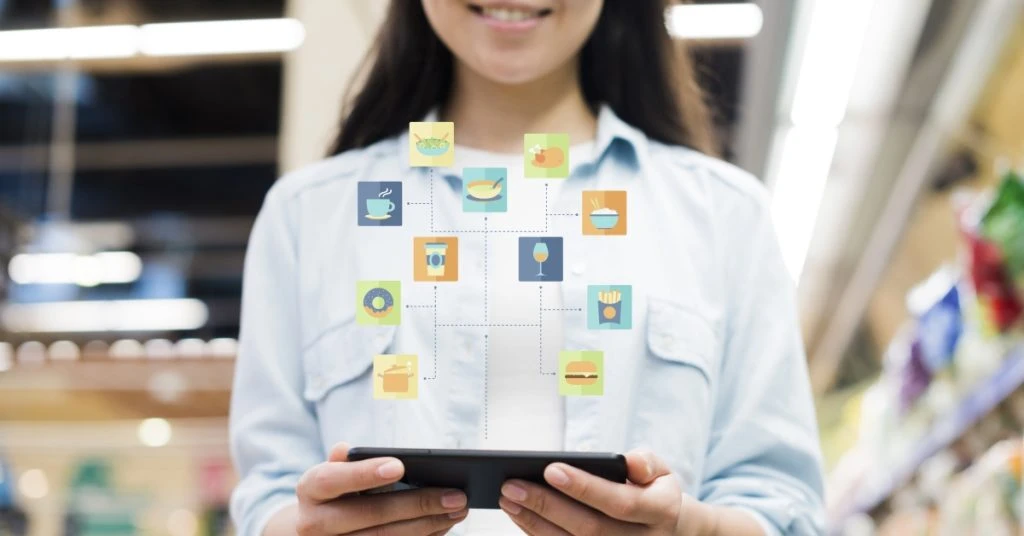
Thus, it is time for these companies to innovate to ensure their survival in the system. The easiest method would be to launch an e-commerce platform through which the users can place their orders.
With an operational supply chain that provides essential goods, these businesses have all the mechanisms in place to jump into the online grocery business. Since these businesses are already operational in this field, all they have to do is to create an online platform or an app and employ a fleet of delivery agents.
These businesses do not even need to employ their fleet if they want to cut down on costs. They can simply establish contracts with a local group of drivers or riders, and the delivery agency can take care of the last-mile delivery of the goods.
Creating the perfect app or a website is the most crucial aspect of these businesses. Hence, employing the right e-commerce development service provider to make an application that best suits the demands of the business is quite essential. Thus, it will be possible to expedite the mobile app development process so that the business can be made operational in no time.

Large variety of options to choose from:
During the quarantine period, people have started exploring more healthier options in terms of groceries, food, fitness, as well as lifestyle. So, people are exploring different new hobbies, ranging from anything between learning how to cook or working out at home.
Online grocery platforms that provide a diverse range of food items seek to gain from such a move, due to people starting to experiment with different kinds of food while staying home during this lockdown period. Some of these items might not be available for sale in the local supermarkets or grocery stores.
Not only do these online supermarkets provide a diverse variety of products, but they also offer users the option of selecting the same product from more than one brand. These options help the consumers choose the products that provide the most reasonable price point.
Unlike regular grocery stores, the online grocery stores also have the ‘Notify Me’ option available. This feature is particularly useful when any product that they seek, which was previously out of stock, is re-stocked on the website so that the customers can quickly place an order for it.
Public demand for on-demand grocery apps
No matter how adverse the present situation is, it has led to a rise in demand for on-demand grocery delivery services. Entrepreneurs need to encash on such an opportunity and try to meet this demand in the present scenario.
Previously, due to the vast amount of competition in this domain, especially from the local grocery retail outlets, entrepreneurs had a hard time entering the market. This occurrence was especially because these people were earning lower margins after incurring marketing costs in the forms of promotional discounts, offers, and coupons.
In the present scenario, apart from the initial promotions and advertising costs, the companies which operate in this sector will not have to incur additional charges for providing discounts on bulk orders. This phenomenon is because consumers generally tend to purchase in bulk during this quarantine period.
Since the demand for such an app already exists, the company will end up saving in terms of advertising costs and can also give out fewer discounts on different product categories. This opportunity can help the entrepreneurs earn higher margins on the sale of products.
If the on-demand grocery store can provide products that are out of stock elsewhere in the market, then customers will be attracted to the app through a simple search on any search engine. The idea is to encash on this opportunity and earn profits by taking advantage of the market scenario.
Ease of designing and maintaining an online grocery store app
Compared to other on-demand service apps that require a higher degree of customization, on-demand e-commerce portals for grocery businesses are less challenging to design and maintain. Products only need to be categorized according to the segments that they fall under.
Mostly during the time of coronavirus, the products that get sold most frequently include staple and packaged goods which have a longer shelf life as compared to most other items on the catalogue.
Opportunities for existing businesses to revive operations
The Covid-19 outbreak has majorly hit the existing businesses in the on-demand service domain. Primarily the field of on-demand transportation services has been badly hit. This domain includes services such as Uber, Rapido, and many more. These service providers are all establishing tie-ups with other retail grocery outlets and trying to maintain their operations during these trying times.
The on-demand food delivery service providers have also joined in due to them having an already operational fleet of delivery agents. This category includes major players such as Swiggy and Zomato. These service providers have tied up with grocery retail chains such as Spencer’s Retail, Nature’s Basket, and Big Bazaar and are currently supplying groceries through their app.
Some of these companies are in talks with the big players in the retail market; namely, Flipkart and Amazon to deliver groceries and essentials during the lockdown period. Uber has already partnered with Uber for the last-mile delivery of essential products in metropolitan cities such as Bengaluru and Mumbai.
Not only do these measures enable containment of the Covid-19 virus, but it also helped to revive an economy that was teetering on the brink of collapse. The transportation business thus gets a boost from these measures and ensures a win-win situation for all the participants.
Conclusion
With the cases of coronavirus increasing exponentially, right now is the time that people need to stay indoors rather than go outdoors to avoid contamination. In a world where the delivery personnel who deliver essential items to the doorsteps are considered as heroes for fighting in times of need to lower the spread of the pandemic, not every step is about generating profits.
Being a business that reaches out to people in times of need by delivering essentials to the aged populace, who are most susceptible to fatalities from the virus, by ensuring perfect hygiene is a noble act in itself. That the demand exists for the same is a momentary benefit in this sector.
Since the success of any business is dependent on identifying the gaps in service delivery and trying to fill them, right now is the best time to enter the online eCommerce market to satisfy the current level of demand.
Such a move would not only ensure better competition among the players in the markets, but it would also provide an opportunity for achieving a reasonable rate of market capitalization. If your grocery business already has a physical presence, this would be an added channel for expansion.
So what are you waiting for? Get started today so that you can reap the benefits tomorrow!


